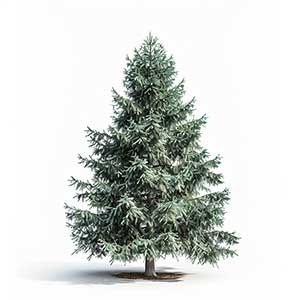Spruce is a coniferous tree widely found in the northern temperate and boreal regions of the Earth. In perfumery, Spruce is valued for its crisp, fresh, and clean coniferous scent which is reminiscent of pine forests and outdoor freshness. Historically, the use of spruce in fragrances and other scented products dates back to traditional practices where its boughs and resins were used for medicinal purposes and to freshen up environments.
Spruce essential oil is derived through steam distillation of the needles and twigs of the spruce tree. In fragrances, Spruce adds a robust, fresh, woody note that is often associated with the outdoors and wintery scents. It is commonly used in the creation of colognes, forest-themed scents, and holiday fragrances, providing a backbone of freshness that is both uplifting and grounding.
The inclusion of Spruce in a fragrance composition evokes feelings of being in a vast, green forest, enhancing themes of nature and purity. It's used in perfumery not just for its scent but also for its ability to invoke a sense of calm and rejuvenation, making it popular in aromatherapy and relaxation-focused products.
Natural or Synthetic?
Spruce oil is primarily extracted naturally but also synthesized for consistency and economic reasons. Natural extraction via steam distillation can be costly and yield less oil, making synthetic alternatives viable for large-scale production.
Fragrance Families Spruce Most Commonly Found In
Show fragrances that contain Spruce as a note



